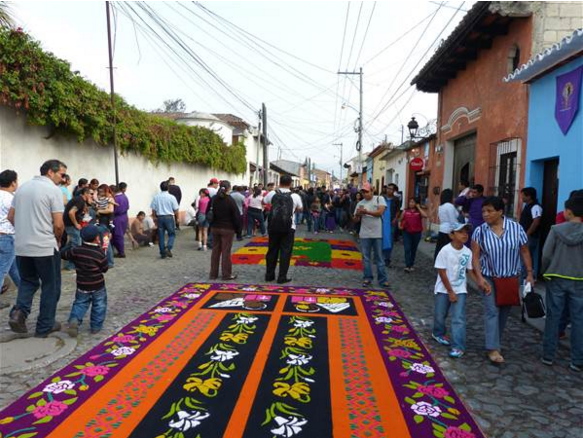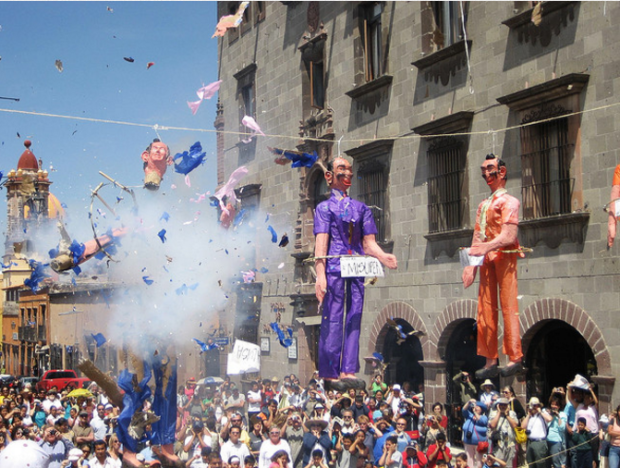A peek of Holy Week rituals around the globe
The Lenten season is noted as the time where Christians commemorate recall the agony and torment of Jesus Christ by visiting the 12 Stations of the Cross and fasting. In the Philippines, the Holy Week’s captivating “bull’s-eye” is the sacred San Pedro Cutud crucifixion in Pampanga where selected Christians would volunteer to be crucified as a way of cleansing themselves from sins.
In other parts of the world, this divine season is practiced modestly, chiefly in Catholic-dominated nations.
Hvar, Croatia
In this island, “Za Krizen” (following the cross), a 500-year-old Holy Week tradition, is observed on Maundy Thursday. Six random processions from six different churches start in the evening and end in the morning. A man clothed in a white garment would lead the procession while “kantaduri” (singers) sing the “Gospin Plac” (Weeping of the Lady), a 15th century oral chant composed of eight syllables.
Antigua, Guatemala
Antigua, one of the most popular sites in Guatemala aside from the Mayan ruins of Tikal, attracts thousands of visitors each year in this Latin American country. Over the weekend of Lent, residents built “alfombras” (carpets) decorated with flowers, colored sawdust and vegetables on the streets where a procession will take place. It takes lengthy hours for the villagers to create the handicraft alfombras and they are left to be crushed and minced as the procession passes through the streets.
Article continues after this advertisementAlso, another tradition practiced in this former Spanish colony is the “andvelaciones” found in Antigua’s churches. Andvelaciones are vigils wherein sacred figures are throned in an altar decorated with alformbras, representing the garden of Gethsemane where Jesus was believed to have prayed and spent time before his arrest and crucifixion.
Article continues after this advertisementAnother highlight in Guatemala’s holy week season are the “cucuruchos” or carriers who are dressed in purple robes and carry processional figures in a procession. Infants and young boys who will be trained to be cucuruchos are encouraged by the elders to dress in the traditional Lenten purple robes with sewn patches with the words “aspirante.”
Seville, Spain
A region called Andalusia in Seville is recommended as a “must-go” during Spanish Lenten season. Tens of thousands of people flock to the streets to join the processions. “Cofradias” (church brotherhoods) would actively participate in one of Spain’s grandest fiestas, as thousands of “nazarenos” (penitents) would carry the figures during a procession that starts from a cathedral. For anonymity purposes, nazarenos should wear a “capirote,” a tall and pointed hood with eye holes, to mask their faces as self-confessed sinners.
Similar to the Filipino tradition of chanting religious songs, Spanish devotees have their “saetas” or overly emotional moments in processions comprising cappella flamenco songs honoring the religious statues. Around a million visitors flock to Seville for this late-night spectacle.

Hooded penitents from the “La Candelaria” brotherhood walk to the church to take part in a traditional annual procession in Seville, Spain, Tuesday, March 22, 2016. Hundreds of processions take place throughout Spain during the Easter Holy Week. AP
Mexico City, Mexico
Semana Santa runs from Palm Sunday (Domingo de Ramos) to Easter Sunday (Domingo de Pascua) and from Easter Sunday to the following Saturday. Moreover, this signals the much-awaited semester break of Mexican students. During Black Saturday, burning effigies of “Judas” in towns like San Miguel de Allende are rampant because it symbolizes his treachery, however, Mexicans would also create effigies that resemble corrupt and “Satanic” politicians. The melting pot of Mexican holy week is located in Iztapalapa, southern Mexico, where over a million people gather every year for the “Via Crucis” (Way of the Cross), where nazarenos would march in a procession to fulfill their vows to God.
Jerusalem, Israel
The Hebrew Holy Week kicks off on Palm Sunday, where people normally attend the Mass and march from Mount of Olives in Kidron Valley going to the Old City to commemorate Christ’s acceptance in the city, as furnished in the New Testament. On Maundy Thursday, people witness the depiction of Christ’s meditation scene in the Garden of Gethsemane followed by candlelight procession heading to the church of St. Peter in Gallicantu, where Jesus was arrested and interrogated during the night. RAM


